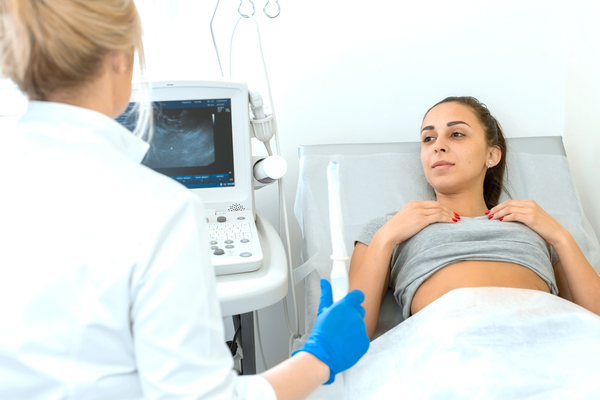Egg retrieval is a crucial stage in assisted reproductive technologies, particularly for women pursuing in vitro fertilization (IVF). The process can be both physically and emotionally taxing, leading many to question whether back-to-back egg retrievals are a viable option. This inquiry blossoms from a combination of practical concerns and the complex emotional landscape associated with fertility treatments.
To explore this topic, it’s essential to understand the mechanics behind egg retrieval and the hormonal stimulation that precedes it. Hormonal medications are administered to stimulate the ovaries, which encourages multiple follicles to mature. Following a series of monitoring appointments, when the follicles reach the desired size, the retrieval process is initiated. This involves a minor surgical procedure under sedation or anesthesia, where a thin needle is guided through the vaginal wall into the ovaries to extract the eggs.
Now, let’s delve into the idea of conducting back-to-back retrievals. Clinically, back-to-back egg retrievals typically refer to performing two retrievals within one menstrual cycle or consecutively over a short timeframe. Many fertility specialists may indeed consider this feasible based on individual circumstances. There are emerging studies suggesting that it could minimize the total time one may spend undergoing fertility treatments, while also maximizing the number of viable eggs collected for potential fertilization.
However, this approach isn’t without its caveats. The body requires time to recover after stimulation and retrieval. Hormonal levels fluctuate significantly during this process, and undertaking another round of stimulation too soon could lead to overstimulation of the ovaries, which can pose potential health risks. Ovarian Hyperstimulation Syndrome (OHSS) is a condition to be mindful of; even minor cases can result in discomfort and major complications in severe instances.
One of the primary reasons individuals are fascinated by the concept of back-to-back egg retrievals is the allure of efficiency. For many, the emotional toll of undergoing fertility treatments cannot be overstated. Each visit to the clinic, countless injections, and the endless cycle of hope and despair can lead to considerable emotional fatigue. As such, expediting the conception process through back-to-back retrievals may seem like an attractive prospect. It’s akin to attempting to maximize yield from a single harvest: the faster you can work, the sooner you can achieve desired results.
Moreover, when considering the biological clock many women are concerned about, this urgency is compounded. The conversation surrounding age and fertility has been prevalent for decades. Statistically, women’s fertility begins to decline in their late twenties and tapers off significantly as they approach their mid-thirties. Thus, condensing the timeframe for egg retrieval could resonate deeply with those acutely aware of their biological limitations, intensifying the desire for a streamlined process.
Yet, while the desire to optimize retrieval outcomes is prevalent, variations in individual response to fertility medications lead to distinct responses from one patient to another. Some may produce a surplus of eggs conducive to multiple retrievals, while others may struggle to produce a sufficient quantity, making it inherently variable. Coupled with the emotional and physical demands of repetitive cycles, one must take a holistic approach, weighing the pros and cons meticulously.
Clinically, implementing back-to-back egg retrievals necessitates a tailored strategy. Many practitioners would advocate for a meticulous assessment of a patient’s response to hormonal treatments, alongside continuous monitoring to ensure safety. This bespoke approach emphasizes personalized medicine—one that acknowledges differing physiological responses and emotional states throughout the process.
Moreover, the discourse around fertility often highlights communal experiences surrounding egg retrieval. Women often seek camaraderie through support groups, sharing stories of their journeys involving fertility challenges. This drives home the point that beyond the medical and logistical aspects of back-to-back retrievals lies an emotional framework that deserves equal consideration. Many women grapple with the fear of inadequacy, comparing their experiences to those of others. Such narratives resonate deeply and can be both encouraging and dispiriting, revealing layers of fascination that delve beyond the science itself.
The ethical implications surrounding the quantity of eggs retrieved also merit discussion. With an increased focus on maximizing yield through back-to-back retrievals comes the responsibility for thoughtful decision-making regarding the fate of excess embryos. As fertility treatments evolve, so do the ethical conversations surrounding the implications of cryopreservation, embryo storage, and the long-term consequences of decisions made during the demanding journey of IVF.
Ultimately, the question of whether women can undergo back-to-back egg retrievals serves not only as a medical inquiry but also as a window into broader themes surrounding fertility and emotional well-being. While the allure of a swift path to motherhood is palpable, it is imperative to balance ambition with caution, ensuring that each woman’s unique circumstances are honored through informed and compassionate care.
As science advances, the dialogue surrounding fertility will continue to evolve, and so too will the strategies available to women on this arduous journey. Knowledge, mindfulness, and collaboration between patient and provider are key components in navigating the often turbulent waters of fertility treatments, keeping the focus not solely on efficiency but on overall well-being.
